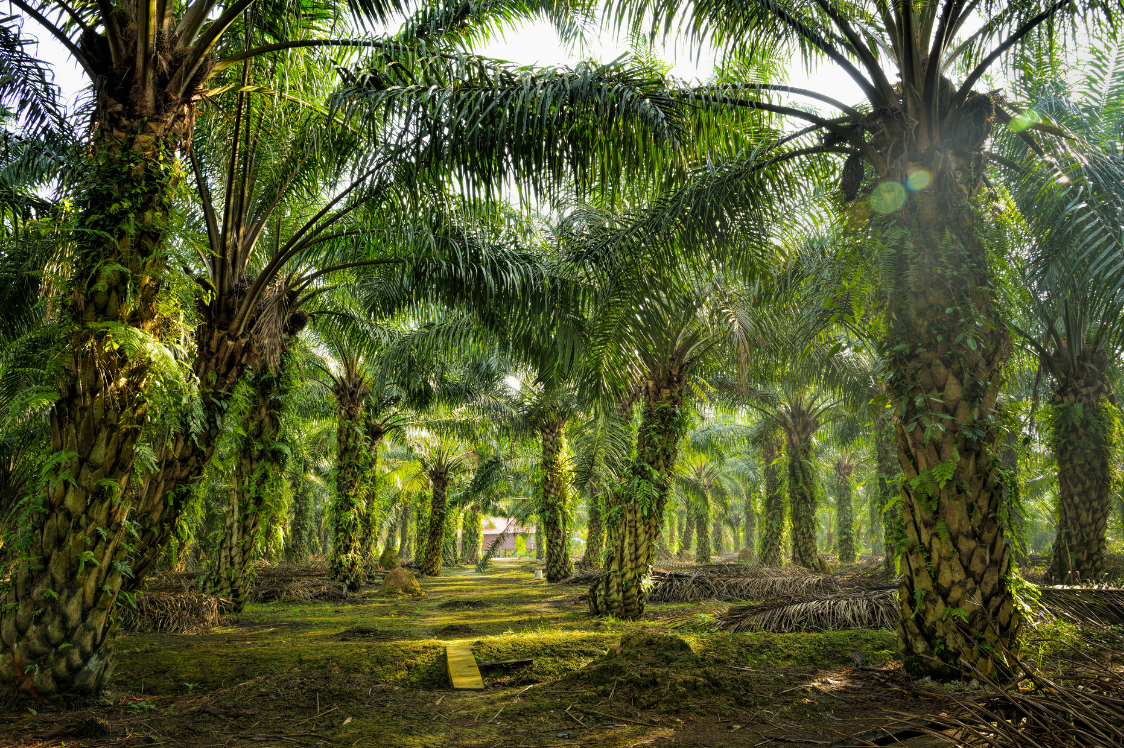Palm oil is an oil of vegetable origin that is obtained from the mesocarp of the palm fruit of the species Elaeis guineensis and Elaeis oleifera. It is the second type of oil with the highest production volume, the first being soybean oil.1 The palm fruit is slightly red, like unrefined bottled oil. Crude palm oil is a rich source of vitamin A and vitamin E.
The palm of the species Elaeis guineensis is native to West Africa, oil was already obtained from it approximately 5000 years ago, especially in Western Guinea from where it passed to America, introduced after the voyages of Columbus, and in more recent times it was introduced to Asia from America. The crop in Malaysia is of great economic importance, although its production threatens the native ecosystem, leading to the extinction of numerous species of birds and orangutans. supplies the largest amount of palm oil and its derivatives worldwide. In America, the largest producers are Colombia and Ecuador.
The use of palm oil may date back more than 5,000 years. In the late 19th century, a substance determined to have originally been palm oil was discovered in a tomb at Abydos (dated 3,000 years ago). Some historians think that palm oil was introduced to Egypt by Arab traders, while others argue that the Arabs cannot possibly be responsible, because they did not settle in Africa until the 8th century AD. and that it is most likely introduced to Egypt by its original colonizers, who emigrated from other regions of the African continent. Palm oil obtained from E. Guineensis has been known in the regions of Central and West Africa since ancient times and is widely used as cooking oil. European traders doing business in West Africa occasionally acquired palm oil for use as cooking oil.
Palm oil became a highly prized commodity by British merchants during the Industrial Revolution for its application as an industrial lubricant.
This oil is also the main component of many soap products, such as "Sunlight" soap from Lever Brothers (now Unilever) or the American brand 'Palmolive'.
Around 1870, palm oil was the main export product of some West African countries, such as Ghana and Nigeria, although it was replaced by cocoa around 1880.
Palm cultivation for oil has been criticized for its environmental impact, which includes deforestation, loss of natural habitats for endangered species, such as communities of native birds, species such as the orangutan and the Sumatran tiger. It also contributes to the emission of greenhouse gasses. Many palm plantations are located on peat bogs, and deforesting the land for cultivation contributes to increased greenhouse gas emissions.
Significant efforts have been made to make palm cultivation sustainable by several organizations, such as the "Roundtable on Sustainable Palm Oil", an industry group, and the Malaysian government, which has committed to maintaining 50% of its surface like forest. According to research by the "Tropical Peat Research Laboratory", a group dedicated to the study of palm cultivation, palm plantations act as carbon sinks, converting carbon dioxide into oxygen and, according to the "Second Communiqué Malaysia's National Framework Convention on Climate Change, plantations contribute to Malaysia's status as a net carbon sink.

